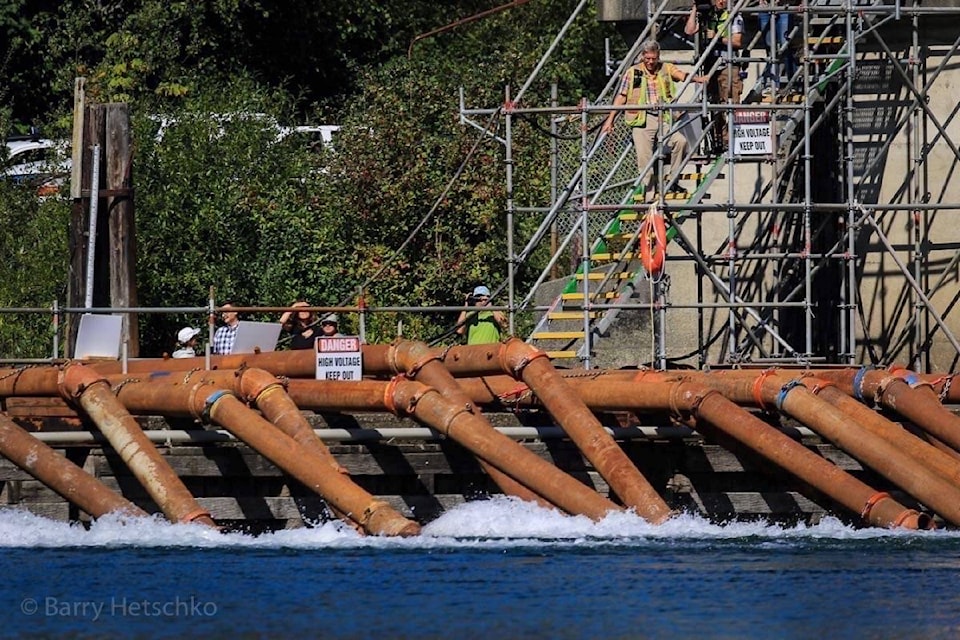Last year marked a year of “firsts” in issues related to the Valley’s water supplies that no one wanted to see, says the annual report for 2019 from the Cowichan Watershed Board.
In the report, the board’s co-chairmen Aaron Stone, head of the Cowichan Valley Regional District, and William Seymour, chief of Cowichan Tribes, said one of the firsts is when the Cowichan River became dependent upon “life support” for three weeks last summer, with electric pumps drawing down water in Cowichan Lake to keep the river flowing.
RELATED STORY: WATER PUMPING HAS STARTED AT COWICHAN LAKE
The second one was when farmers in the Koksilah watershed were legally restricted from irrigating forage crops for the first time due to critically low water flows, under the authority of B.C.’s new Water Sustainability Act, and the third was when governments across Canada, including in the Cowichan region, declared a state of emergency in recognition of the dire need for action on climate change.
RELATED STORY: PROVINCE BEGINS RESTRICTING WATER USE ON KOKSILAH RIVER
Stone and Seymour said that times like these test the resilience and effectiveness of organizations to pursue their mandates under stress.
“Occasionally they also open doors as the need for that mandate becomes more apparent to others,” they said.
“The Cowichan Watershed Board is working hard to leverage those opportunities collaboratively, in partnership, for the long-term health of the Cowichan and Koksilah watersheds. We look forward to what we will achieve together in the decade to come.”
The report lists a number of accomplishments of the CWB in 2019.
The first is funding for the new weir at Cowichan Lake to regulate water in the river more efficiently and effectively.
Working in a partnership between the CWB, CVRD, Cowichan Tribes and Catalyst Paper, a $4 million-contribution from senior levels of government was acquired to conduct engineering and impact studies into replacing the weir.
RELATED STORY: WORK BEGINS ON NEW WEIR FOR COWICHAN LAKE
Another accomplishment, which also concerns the new weir, was the development of the new WeirReady.ca website to improve awareness and answer questions around the construction of the weir.
The report also touts the board’s successful efforts in bringing the low flows in the Koksilah River last summer to the attention of the province, which led to the Ministry of Forests, Lands, Natural Resource Operations and Rural Development establishing a series of observation wells in the watershed to help gather key information to allow for better water management in the area.
The report states that the board also began working on the larger issue of “whole of watershed” planning, in both the Cowichan and Koksilah watersheds, including forest hydrology workshops in 2018, and ongoing field trips and conversations in 2019.
“But while [2019] was a year of significant success and progress as an organization, the clear evidence is that the Cowichan and Koksilah watersheds face urgent challenges,” the report said.
RELATED STORY: COWICHAN LAKE STILL NOT FULL AFTER SUMMER DROUGHT
“Local ecosystems are in peril, and the health of our communities is intertwined with that vulnerability. The Cowichan Watershed Board looks forward to continuing to play a leadership role in taking a ‘whole of watershed approach’ to address these challenges in the spirit of partnership and reconciliation that defines our organization.”
robert.barron@cowichanvalleycitizen.com
Like us on Facebook and follow us on Twitter
